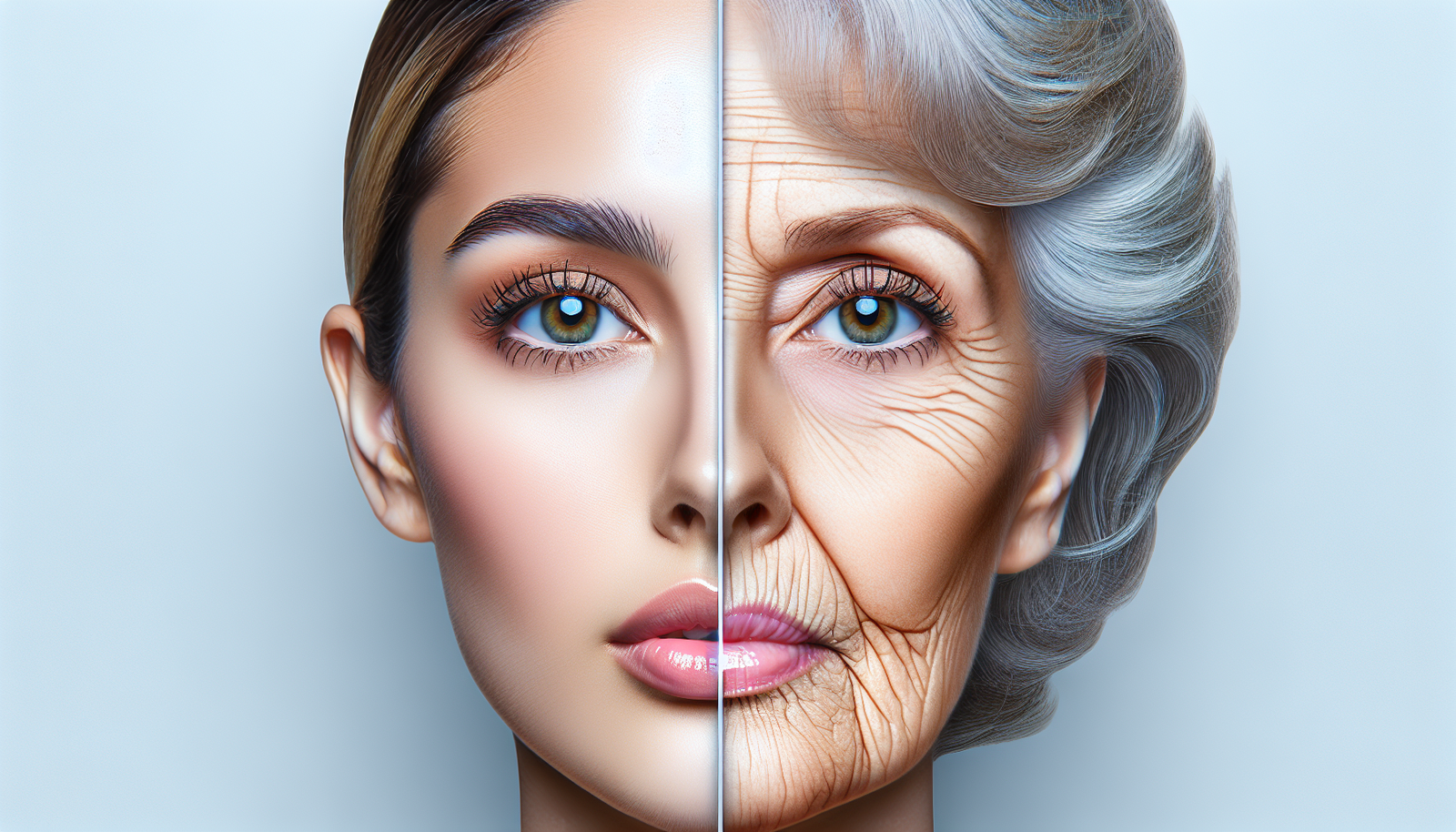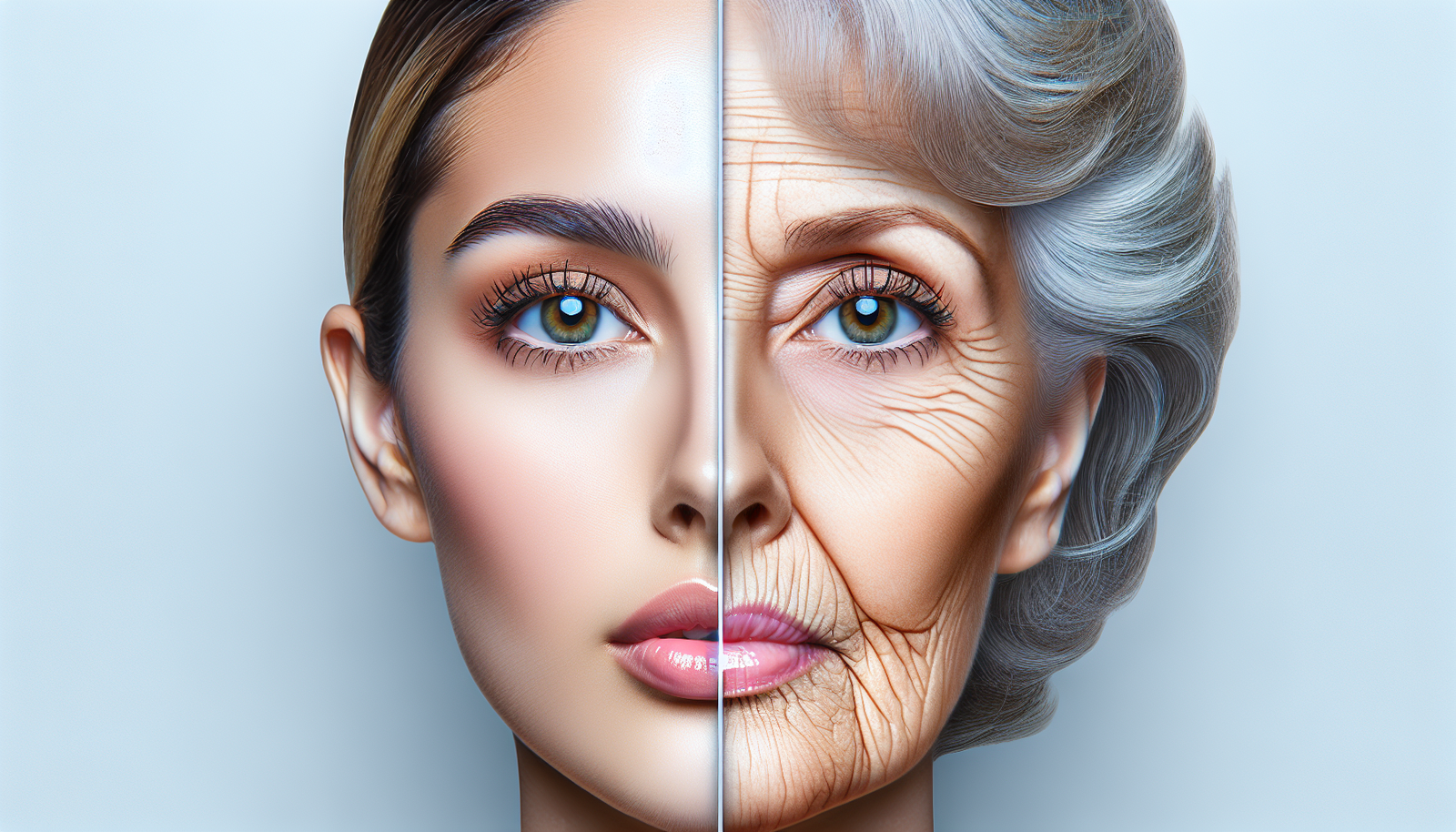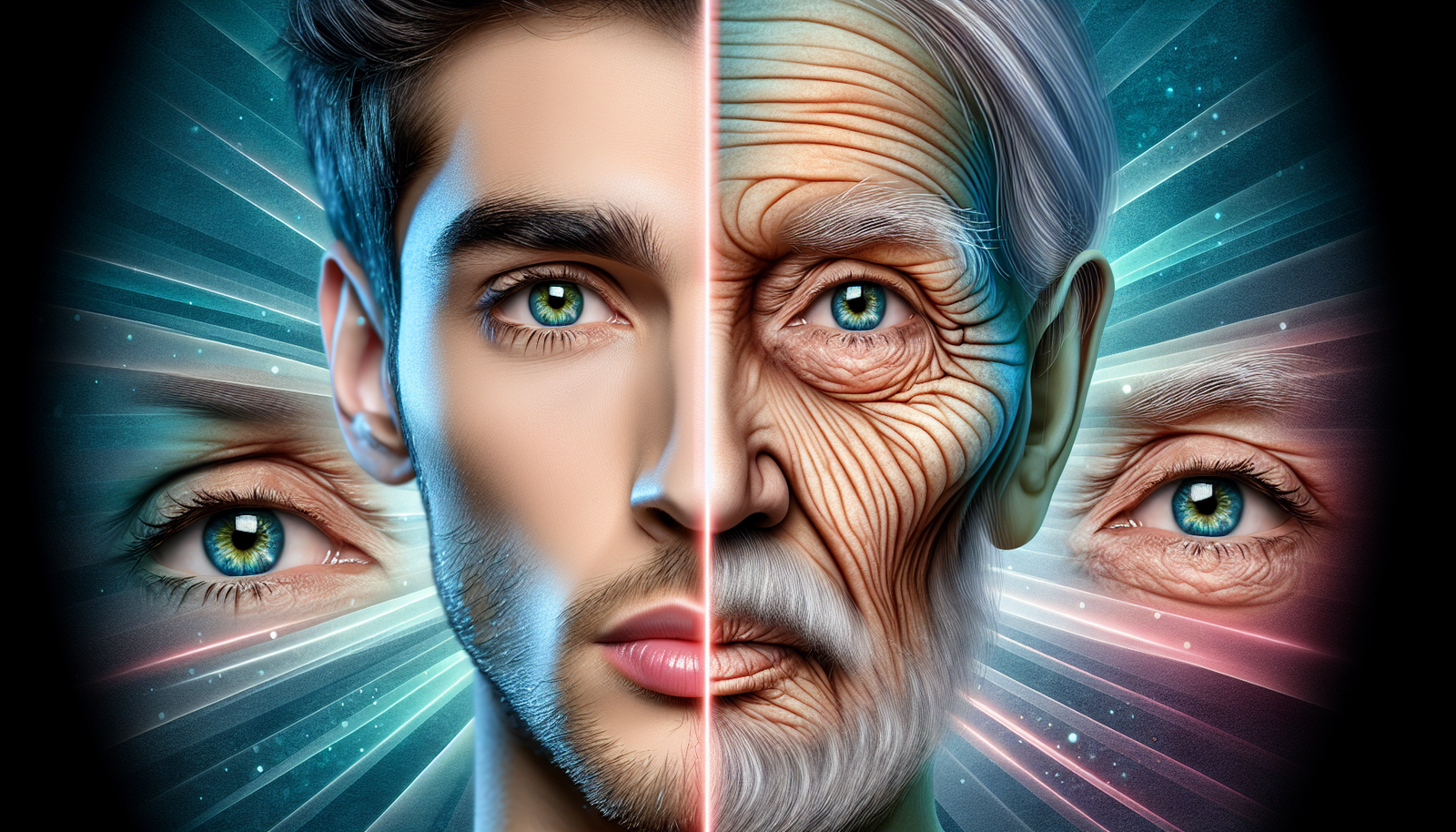
“Understanding the Effects of Aging: Facial Changes and Thinning Features” is just the prescription you need to enlighten yourself on the natural aging process, specifically the facial changes and thinning features that come with it. As the years advance, so do the visible indications of age, but with in-depth knowledge about these transformations, you can better navigate your personal journey. The crux of this article is about how your face could look thinner and older as you climb the age ladder, and how understanding these changes can help you decide the most suitable approaches to tackle it.
The Science Behind Aging and Facial Changes
As we age, our body goes through numerous physiological changes that influence our appearance. Among all, facial changes are often the most noticeable and can significantly impact your self-perception and confidence. This section will provide a brief understanding of some of the most common physiological reasons behind facial aging.
Understanding the physiological reasons behind facial aging
Facial aging is a complex process influenced by a variety of factors. It’s a combination of both intrinsic and extrinsic elements. Intrinsic factors include genetics and natural aging, which can lead to dehydration and elasticity loss. Extrinsic factors such as environmental exposure (UV radiation, pollutants), lifestyle choices (smoking, diet, and stress) can accelerate the aging process, causing premature aging in certain individuals.
How aging affects elastin and collagen production
One of the most significant impacts of aging on the facial appearance is the reduced production of elastin and collagen. Collagen, a protein that provides structure to the skin, and elastin, which is responsible for skin elasticity, start to decrease as you age. From your 20s onwards, your body produces about 1 percent less collagen every year. This reduction results in the skin becoming thinner and less resilient, leading to fine lines, wrinkles, and sagging.
Changes in Facial Bone Structure with Age
Aging doesn’t only affect your skin; it also affects the bones in your face. With age, the facial skeleton changes, leading to noticeable alterations in your facial contour.
How bone resorption impacts facial appearance
Bone resorption is a natural process where the bone tissue is gradually broken down and absorbed back into the body. As you age, this process can accelerate, leading to a reduction in the size and thickness of facial bones. This results in changes to the contours of your face, such as a shorter, narrower jawline, retruded cheekbones, and orbital opening enlargement.
Changes in specific facial bones over time
Over time, certain facial bones such as the jawbone, cheekbones, and orbital bones change shape and size. For example, the jawline can become less defined, the cheekbones may lose their prominence, and the eye socket can enlarge—all intensifying the aged appearance.
Correlation between bone structure changes and perceived age
Changes in the bone structures can significantly impact the perceived age. A weakened jawline or less prominent cheekbones, for instance, are often associated with an older appearance, regardless of factors like wrinkles or skin laxity.
Roles of Fat and Muscle in Facial Aging
Let’s now shed some light on how changes in facial fat and muscle contribute to the aged appearance of your face.
Age-related changes in facial fat distribution
One of the most significant changes that occur with aging is the redistribution and volume loss of facial fat. As you age, fat pads in your face become thinner. They also move downwards due to the effects of gravity and reduced skin elasticity.
The impact of muscle weakening on facial appearance
Aging also causes the muscles in your face to lose strength and tone, which in turn can lead to sagging skin. This can be particularly noticeable around the jawline and jowls. The decline in muscle mass further contributes to the loss of facial volume, altering the shape and appearance of the face over time.
The effects of fat loss on facial contours
Loss of volume from fat reduction results in less plumpness, causing changes in the contours of your face. You may notice your cheeks appearing sunken, and your temples becoming more depressed. This volume loss can highlight bone structure changes, resulting in a more aged appearance.
The Appearance of Wrinkles and Fine Lines
One of the most common and apparent signs of facial aging is the appearance of wrinkles and fine lines.
Why wrinkles form with age
As the collagen and elastin in your skin decrease, and as your facial muscles lose tone and volume, your skin loses its ability to bounce back from daily muscle movements and expressions. This lack of resilience leads to the formation of wrinkles and fine lines over time.
Areas of the face most susceptible to wrinkles
Certain areas of the face are more susceptible to experiencing the effects of wrinkles. Areas where the skin is thinner or where more muscle movement occurs often show wrinkles first. These areas include the corners of the eyes (crow’s feet), between the eyebrows (frown lines), and around the mouth (laugh lines).
The link between skin elasticity and wrinkle development
Skin elasticity refers to the skin’s ability to stretch and then return to its original state. As skin elasticity decreases with age, the skin is less able to recover from expressions and folds, leading to the formation and deepening of wrinkles.
Facial Volume Loss and Thinning Features
As you age, your face begins to lose its youthful volume, leading to thinner features and changes in the way your face looks.
How volume loss contributes to a thinner face
The redistribution and reduction of fat, coupled with the loss of muscle mass and bone resorption, lead to facial volume loss. This volume loss results in your face looking thinner and more angular.
Effects of volume loss on different facial features
Volume loss impacts different facial features in different ways. Your cheeks may deflate and look sunken in, while your eye sockets may appear deeper due to fat loss in the area. Additionally, your lips may thin due to a decrease in muscular and fatty tissue.
The relationship between facial volume loss and skin sagging
As the face loses its volume, the skin no longer has a firm base to sit upon. This leads to loose and drooping skin, particularly noticeable on the cheeks, neck, and jawline—a process commonly termed as sagging.
Effects of Aging on the Skin Tone
As we continue to age, our skin tone and complexion also witness noticeable changes.
The changes in skin pigmentation over time
Over time, the skin’s pigmentation may change, leading to an uneven skin tone. Additionally, you may develop age spots, also known as liver spots, as a result of prolonged sun exposure and the natural aging process.
How sun exposure contributes to age-related skin discoloration
Sun exposure is a significant contributor to age-related skin changes, including discoloration. Chronic exposure to the sun leads to an accumulation of melanin, the skin’s pigment, resulting in dark spots and uneven skin tone. This is why protecting your skin through diligent sunscreen application is vital.
A Closer Look at Skin Laxity
Skin laxity, or loose skin, is another common aging sign that can significantly affect your facial appearance.
Understanding skin laxity and its relation to facial aging
Skin laxity often occurs as a result of changes in the skin’s structural proteins, such as collagen and elastin. As these proteins decrease, the skin loses its firmness and elasticity, leading to a sagging appearance.
Common areas of the face impacted by skin laxity
The most commonly affected areas by skin laxity include the cheeks, jawline, and neck. The loosening of skin in these areas can lead to the formation of jowls and “turkey neck.” However, any part of the face and body with substantial skin can experience laxity.
How skin laxity contributes to sagging cheeks and jowls
When the skin becomes loose due to decreased collagen and elastin, it can sag and form jowls along the jawline. The sagging of cheeks can further accentuate the loss of facial volume, making the face appear more aged.
The Aging Process and the Eyes
The eyes are often the first area to show noticeable signs of aging, given the skin in this area is thinner and more delicate.
Changes in the eyelid skin with age
As you age, the skin around your eyelids can become loose and droopy, often resulting in an “eyelid hood.” This change can make your eyes appear smaller and may also make applying makeup more challenging.
How age affects the fat pads around eyes
Aging can cause the fat pads around your eyes to protrude or shift, leading to eye bags or hollows. This change can make you look tired or older than you are.
The relationship between aging, lower eyelids, and eye bags
Over time, the muscle that holds the fat around the eyes weakens, leading to lower eyelid bags. Combined with skin laxity, this can result in a marked change in the eye area, contributing to a more aged and fatigued appearance.
The Impact of Aging on Lips and the Mouth Area
The mouth area, including the lips, is another crucial area where signs of aging often appear.
Age-related changes in the thickness and fullness of lips
With age, the lips often lose their volume, becoming thinner and less plump. Additionally, the lip line may become less defined, and you may notice the appearance of fine lines around the mouth.
How aging impacts the skin around the mouth
Aging influences not only the lips but also the skin around the mouth. The loss of volume and elasticity, along with repetitive muscle movements (like smiling or frowning), can lead to the development of lines and wrinkles, such as laugh lines or smoker’s lines.
The connection between age and perioral lines
Often referred to as “lipstick lines,” perioral lines are small, vertical wrinkles that appear above the upper lip. These lines are primarily caused by the loss of collagen and elasticity over time, coupled with repeated muscle movements.
Preventive Measures and Treatments for Facial Aging
While facial aging is a natural process, there are various measures you can take to slow the process and reduce its signs.
Topical treatments for signs of aging
Topical treatments such as retinoids, vitamin C, and hyaluronic acid have been proven helpful in combating signs of aging by stimulating collagen production, improving skin elasticity, and adding hydration.
Non-surgical treatments like fillers and lasers
Non-surgical treatments like fillers can replace lost volume and smooth out wrinkles, while laser treatments can stimulate collagen production, reduce pigmentation, and improve the overall texture and tone of the skin.
Surgical options like facelifts and blepharoplasty
For those willing to go under the knife, surgical interventions like facelifts and blepharoplasty can dramatically improve signs of aging by lifting sagging skin and removing excess skin or fat, respectively.
The role of lifestyle and habits in preventing facial aging
Lastly, never underestimate the power of a healthy lifestyle. Proper diet, regular exercise, adequate sleep, minimal sun exposure, abstaining from smoking, and moderate alcohol consumption can significantly slow down the aging process and keep your skin looking youthful and vibrant for longer. Serious skincare, including regular moisturizing and diligent sunscreen use, is also vital in maintaining healthy, glowing skin. Remember, the best defense is a good offense when it comes to combating facial aging.







Leave a Reply